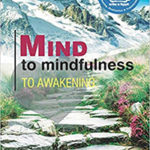Subjective vs. Objective reality & Kundalini
Science vs. Eastern Wisdom
Science aims at understanding the world outside. It is an objective reality. It works at its best in cause and effect relationships. The manual of science is discovering, how objective reality can help live better. The goal if seeking pleasure, satisfaction in the objects, and people around us. Still, the mind seeks permanent peace and happiness.
We are more than the objective reality i.e., we are not the body, breath, mind, intellect, ego, money, gadgets, and what is in the world outside. The subjective reality is different from objective reality. We possess the body, life, mind, intellect, and emotions. We are not the body, breath, brain, mind, intellect, and emotions. Then who we are?
Manual of Eastern Wisdom if different
We need a different manual to discover what does not change deep within us. Eastern wisdom aims at discovering the subjective reality. This is known as real-self or the highest consciousness. The goal of eastern wisdom to discover the real-self or subjective reality to release stress and achieve well-being, peace, and happiness in life. The manuals of finding the real-self are texts, teachings, practices of Eastern Wisdom include, including Yoga, Tantra, Kundalini, Mantra, Nada, Mudra, Chakra, Meditation, etc.
Science complements the journey of Kundalini and mindfulness
Neuroscience says that the brain changes its structure and functions. This change can change our attitude, habits, traits, and physiological, psychological functions. The latest understanding suggests that meditation practices can help change the brain to release stress, achieve inner peace, happiness, and well-being. The latest understanding is verified by neuroplasticity, epigenetics, and neurogenesis.
Meditation or mindfulness is essentially one, but steps are different depending on the temperament of individuals. The path may be different because of the level of the practitioner, may follow the passive or active or dynamic practices. The passive practices include mindfulness; active meditation includes mantra and dynamic include Kundalini meditation practices. According to the teachings of masters, every seeker needs all the above practices to reach to the destination. Buddha followed many active and dynamic practices for years before the final practice of mindfulness.
Understanding leads to clarity to practice to results
The masters who discovered these practices are based on the principles of Eastern Wisdom. The four steps help us to know, how logical they were:
Step-1 We don’t know, let us know, what it is.
Step-2 We don’t understand it. Let us understand and remove doubts, confusion, mysticism, and wrong notions.
Step-3 we don’t experience, let us practice as taught by the masters.
Step-4 revelations by the changes we experience in day to day life.
The dynamic force (Kundalini) or Shakti is to discover Shiva
Before we understand Kundalini, masters tweak to check if we are a seeker who will tread the path with determination, strength, and regular practice. The senses are the Seer and objects are Seen. We are somewhere within the eyes and not in the objects that are seen and far from us. But the senses change, and the mind knows that they are changing. It means senses are Seen and the mind is the Seer. But someone knows that changes in the mind. It means there is someone who knows the changes of mind, is the Real-Seer or self behind the mind, senses, objects of the world outside. It is Shiva and power by which the world, senses, mind, and intellect work is Shakti or Kundalini. The seeker understands the principals through deep contemplation and reflection after regular practice with wisdom; the seeker finds the truth about Kundalini Shakti.



